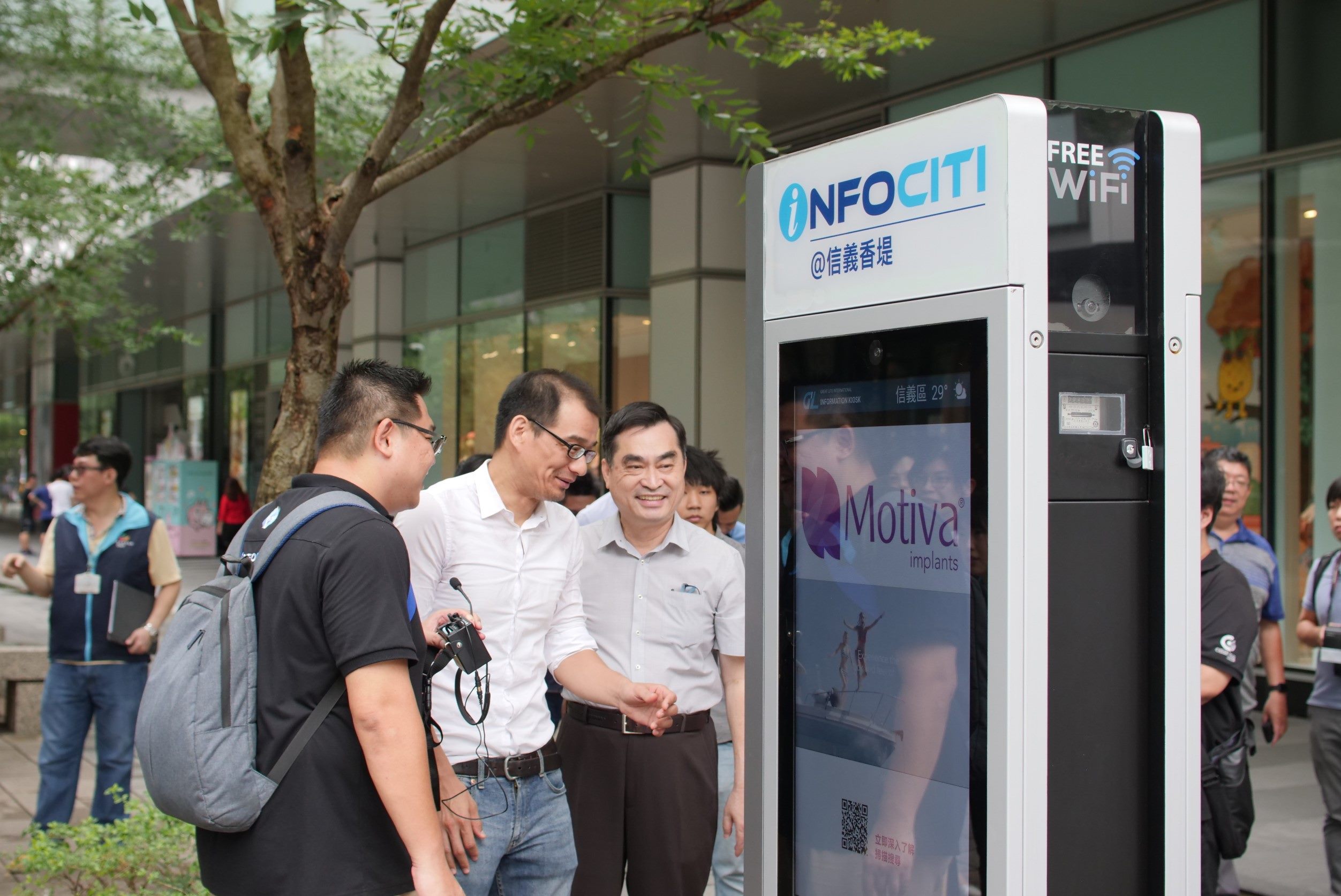Multimedia Kiosk Public Service Expands Citizens’ Comfort Zone
 In an effort to provide citizens with a friendlier Internet environment and multimedia information service, Taipei City Government co-hosted the Multimedia Kiosk Joint Launch Press Conference on August 19 with Edimax, Vermillion, and Great Lite International.
In an effort to provide citizens with a friendlier Internet environment and multimedia information service, Taipei City Government co-hosted the Multimedia Kiosk Joint Launch Press Conference on August 19 with Edimax, Vermillion, and Great Lite International.
According to Deputy Mayor Teng Chia-chi, the city government is a smart city innovation and facilitation platform dedicated to pooling the resources and strengths of the public and private sector in order to materialize these smart, innovative technologies. In the future, it will continue to implement successful pilot projects to major tourist attractions in Taipei, so that each multimedia kiosk will become citizens’, tourists’, and city government’s useful helper anytime, anywhere.
According to Department of Information Technology (DOIT) Commissioner Lu Hsin-ke, the multimedia kiosk innovative experimental pilot project in Xinyi Shopping District, Taipei City, involves contributions from the New Construction Office, Parks and Street Lights Office, Department of Information and Tourism, and Department of Cultural Affairs. Furthermore, 3 winning bidders of the public tender agreed to provide the kiosk gratuitously in an attempt to transform the Xinyi Shopping District into a convenient, comfortable environment for citizens, making it one of the exemplary projects involving public-private partnership (PPP). Now, Taipei City Government has already started making plans to increase the number and scope of multimedia kiosks in order to expand the public’s comfort zone!
In promoting smart city experimental venues, Taipei City Government has made available municipal land including Chianti Avenue in Xinyi District and surrounding pedestrian zones to install 10 multimedia kiosks on a trial basis. The kiosks enable citizens or tourists to enjoy free Wi-Fi, USB charging ports, maps, and guides, as well as information on popular attractions, restaurants, and public transport nearby, in turn refining their urban sightseeing experience. At the same time, data from the vicinity (such as air quality and Wi-Fi usage, etc.) is collected as future reference for the city government when implementing urban planning. Furthermore, for the sake of sustainability, the multimedia kiosks will display messages from the city government and tourism-related information. In the future, collaborations will be made with businesses to generate advertising income and create a sustainable business model.
The emergency phone call service will also become available on the multimedia kiosks in the future in order to provide citizens with immediate assistance. In the event of a major emergency or disaster, the kiosks will be able to broadcast information to citizens’ mobile devices through push notifications, advising them of the areas they should avoid or evacuate from, thereby minimizing the impact of the disaster.
According to DOIT, more experimental venues will be made available in the future on top of multimedia kiosks in a bid to transform Taipei into a smart city by implementing and testing smart technology into everyday scenarios. With the joint efforts of the government and partners, the intention is to inspire more smart applications in the information and communications technology industry, in turn shaping Taipei City into a livable, resilient, and sustainable metropolis.

![Taiwan.gov.tw [ open a new window]](/images/egov.png)
